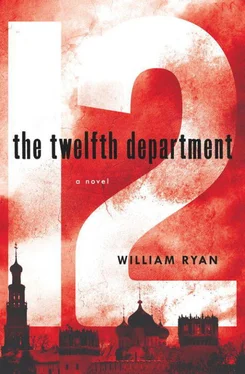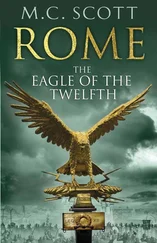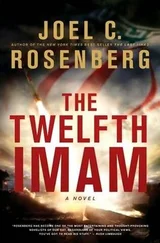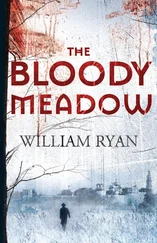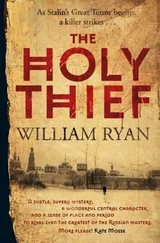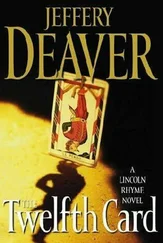Isaac Babel wrote some brilliant short stories in the 1920s, before, like many other Soviet writers, becoming relatively unproductive during the 1930s—a time when the state viewed all forms of artistic expression with suspicion. Babel’s situation wasn’t helped by his having had an affair with Ezhov’s wife, and when Ezhov fell from power, the NKVD chief took the opportunity to denounce Babel as a French spy. The writer was arrested not long afterward and in January 1940 joined a long list of Soviet writers who perished during the Great Terror. It’s said he and Ezhov are buried in the same unmarked grave in Moscow’s Donskoi cemetery.
Grigory Kaminsky, a lifelong Bolshevik, had reached the rank of People’s Commissar for Health in 1937. He was arrested after making a speech at a Central Committee plenum in June of that year during which he criticized the NKVD’s indiscriminate arrest of innocent Party activists. Reportedly he also clashed with Stalin, saying, “If we go on like this we’ll shoot the whole Party,” to which Stalin replied, “You wouldn’t by chance be friends of these enemies—well, then, you’re birds of a feather.” Kaminsky was executed by firing squad at the beginning of 1938 but rehabilitated under Khrushchev in 1955. Kaminsky’s brave action is mentioned in Khrushchev’s famous Secret Speech of 1956, which revealed the full extent of Stalin’s crimes.
I based the building that houses the completely fictional Azarov Institute on the Igumnov House, which is located at 43 Bolshoi Yakimanka Street. The Igumnov House was built in the 1890s for a wealthy merchant but, by 1937, it had become home to the Moscow Brain Institute, an establishment that investigated Lenin’s brain, among others. I’m confident the Brain Institute never engaged in any of the research that occupies the Azarov Institute in these pages. The building was allocated to the French Embassy in 1938 and currently serves as the French ambassador’s residence in Moscow.
The Hotel Moskva, where Korolev meets Madame Shtange in chapter 27, opened in 1935 and was designed by the architect Alexei Shchusev, who was also responsible for Lenin’s mausoleum on nearby Red Square. The Hotel Moskva was one of the most prominent of the new Stalinist-style buildings that replaced so much of the old Moscow during the 1930s and 1940s. The hotel was knocked down in 2004 and replaced with a modern reproduction, but both feature mismatched wings to the facade that faces on to Okhotny Ryad—one wing having larger windows and a more ornate design, while the other is simpler and with smaller windows. The story that Muscovites tell to explain this lack of symmetry is that Stalin mistakenly authorized two alternate plans for the hotel and, rather than ask for clarification, those responsible for the construction implemented one design for each wing, giving the hotel its unbalanced appearance. I’ve posted some photographs of the original hotel on my website ( www.william-ryan.com), including some of the roof terrace where Korolev and Madame Shtange have their conversation.
Gorky Park, where Korolev meets Count Kolya in chapter 42, was opened in 1928 and named for Maxim Gorky, the writer much admired by Stalin—and also probably murdered on his orders in 1936. The parachute tower and the statue of the oarswoman that they notice during their conversation were iconic images of 1930s Moscow and feature in numerous propaganda posters. The parachute tower has long gone but the oarswoman, who has been moved around a bit over the last eighty-odd years, has finally come to rest down on the embankment, calmly overlooking the Moskva. I’ve posted a number of photographs of the park on my website, both as it was in its heyday and how it is today.
Leadership House, where Professor Azarov lives and is murdered, is closely based on the massive Government House—built in 1931 on the same spot as my fictional re-creation and featured in Yuri Trifonov’s novel House on the Embankment. Aside from over five hundred apartments, the building also housed shops, cinemas, theaters, and canteens. The residents of Government House suffered disproportionately during the Terror, probably because so many of them were senior Party members and held important positions within Soviet society. Hundreds of tenants were arrested and many of them executed.
For those who are interested in the period and would like to read further, I can recommend the following books—all of which have been of great assistance in trying to recreate the Soviet Union of the 1930s:
Danzig Baldaev (and others), Russian Criminal Tattoo Encyclopedia , 3 vols. (Steidl/Fuel, 2003; Fuel, 2006; Fuel, 2008).
Harold Eeman, Inside Stalin’s Russia—Memories of a Diplomat 1936–1941 (Triton, 1977).
Orlando Figes, The Whisperers (Allen Lane, 2007).
Sheila Fitzpatrick, Everyday Stalinism (Oxford, 1999).
Sheila Fitzpatrick, Tear off the Masks—Identity and Imposture in Twentieth Century Russia (Princeton, 2005).
Peter Francis, I Worked in a Soviet Factory (Jarrolds, 1939).
Garros, Korenevskaya and Lahusen, Intimacy and Terror—Soviet Diaries of the 1930s (New Press, 1995).
Jochen Hellbeck, Revolution on my Mind—Writing a Diary Under Stalin (Harvard, 2006).
Christina Kiaer and Eric Naiman, Everyday Life in Early Soviet Russia (Indiana University Press, 2006).
Hiroaki Kuromiya, The Voices of the Dead (Yale, 2007).
Nina Lugovskaya, The Diary of a Soviet Schoolgirl 1932–1937 (Glas, 2003).
Nadezhda Mandelstam, Hope against Hope and Hope Abandoned (Collins and Harvill, 1971).
Catherine Merridale, Night of Stone—Death and Memory in Russia (Granta, 2000).
Simon Sebag Montefiore, Stalin—The Court of the Red Tsar (Weidenfeld & Nicolson, 2003).
Peter Pringle, The Murder of Nikolai Vavilov (Simon & Schuster, 2008).
Donald Rayfield, Stalin and his Hangmen (Viking, 2004).
Lewis Siegelbaum and Andrei Sokolov, Stalinism as a Way of Life (Yale, 2004).
Andrew Smith, I was a Soviet Worker (Robert Hale, 1937).
Dominic Streatfield, The Secret History of Mind Control (Thomas Dunne Books, 2007).
Kathleen Taylor, Brainwashing: The Science of Thought Control (Oxford University Press, 2006).
Guide to the City of Moscow (Cooperative Publishing Society of Foreign Workers in the USSR, 1937).
Any historical errors in The Twelfth Department are my responsibility, although they are occasionally deliberate—fiction does, after all, involve quite a lot of making things up. I do like to hear about them, though, so please feel free to get in contact via my website.
There are a number of people who contributed to the writing of The Twelfth Department and to whom I’m very grateful.
Alistair Duncan, who worked on the BBC series The Brain: A Secret History , gave me very helpful research suggestions that pointed me in the right direction at an early stage.
Daniel Petrov managed to get me into places in Moscow I wouldn’t otherwise have been able to visit.
Johnny O’Reilly, the Moscow-based film director, who lives in the House on the Embankment, kindly showed me around his apartment and told me a story or two about the building that made its way into these pages.
Paul Richardson, publisher of the magazine Russian Life , read a late draft of The Twelfth Department and prevented me from making several embarrassing mistakes.
Barney Spender, Jackie Farrant, Ed Murray, and my wife, Joanne, were all careful and very helpful readers of early drafts of The Twelfth Department —their enthusiasm was generous and welcome.
Читать дальше
